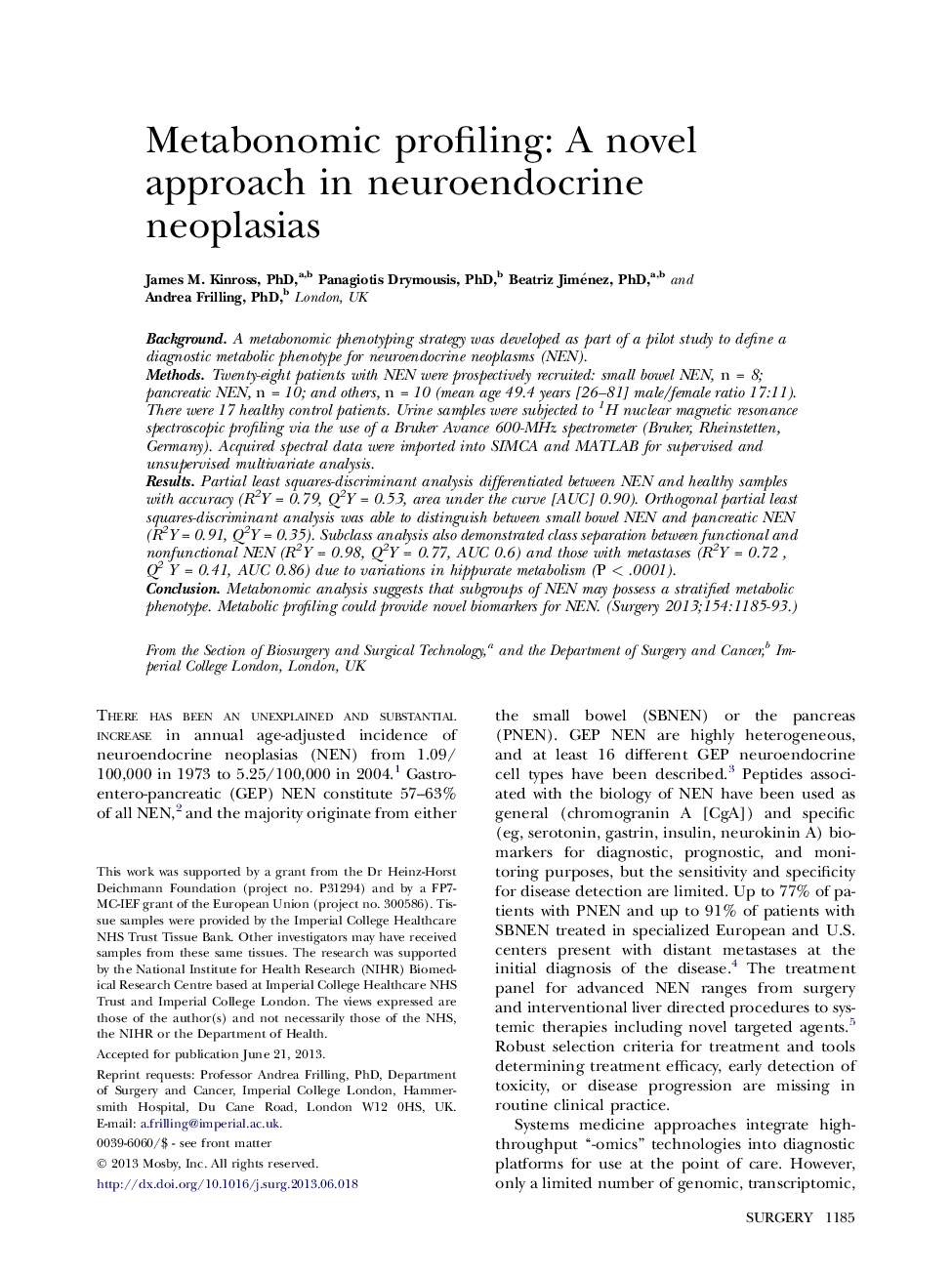| Article ID | Journal | Published Year | Pages | File Type |
|---|---|---|---|---|
| 4307044 | Surgery | 2013 | 9 Pages |
BackgroundA metabonomic phenotyping strategy was developed as part of a pilot study to define a diagnostic metabolic phenotype for neuroendocrine neoplasms (NEN).MethodsTwenty-eight patients with NEN were prospectively recruited: small bowel NEN, n = 8; pancreatic NEN, n = 10; and others, n = 10 (mean age 49.4 years [26–81] male/female ratio 17:11). There were 17 healthy control patients. Urine samples were subjected to 1H nuclear magnetic resonance spectroscopic profiling via the use of a Bruker Avance 600-MHz spectrometer (Bruker, Rheinstetten, Germany). Acquired spectral data were imported into SIMCA and MATLAB for supervised and unsupervised multivariate analysis.ResultsPartial least squares-discriminant analysis differentiated between NEN and healthy samples with accuracy (R2Y = 0.79, Q2Y = 0.53, area under the curve [AUC] 0.90). Orthogonal partial least squares-discriminant analysis was able to distinguish between small bowel NEN and pancreatic NEN (R2Y = 0.91, Q2Y = 0.35). Subclass analysis also demonstrated class separation between functional and nonfunctional NEN (R2Y = 0.98, Q2Y = 0.77, AUC 0.6) and those with metastases (R2Y = 0.72 , Q2 Y = 0.41, AUC 0.86) due to variations in hippurate metabolism (P < .0001).ConclusionMetabonomic analysis suggests that subgroups of NEN may possess a stratified metabolic phenotype. Metabolic profiling could provide novel biomarkers for NEN.
